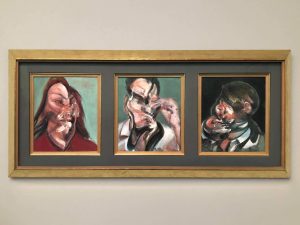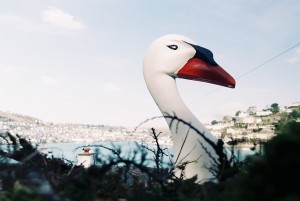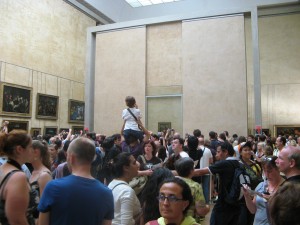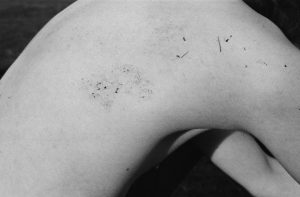
Bosch: Hypnotic Degeneration
by Thalia Roychowdhury | August 21, 2022
I have always called myself an atheist, but this spring I found myself on a pilgrimage. Desperate for cultural enrichment on my short holiday in Madrid, I stood in front of the neat white steps of the Prado. My friends and I, vaguely hungover, flinched at the packs of European schoolchildren queuing behind us. I had dragged them out of bed that March afternoon for one reason only: tucked away in the unassuming Flemish Painters section, between earnest religious paintings and dour Protestant portraits, was ‘The Bosch Room’.
Until my encounter with Bosch’s work, I had been losing faith in the gallery scene. Every exhibition I saw seemed tailor-made for social media. The powerful artworks of Yayoi Kusama shown at the Tate Modern, which confronted her deeply personal struggles with mental health, were reduced to artsy posts on Instagram. The few galleries that did not cater to this emerging crowd doubled down on their elitist policies. No photos, no noise, and absolutely no critique of the artwork. Little price tags on the corners of each canvas.
But that unimposing little corner of the Prado reawakened me. Bosch’s work proved the enduring power of complicated, unphotogenic art, in a landscape dominated by performative influencers and wealthy auctioneers.
Little is really known about Hieronymus Bosch. All we can say for certain is that at some point between the 15th and 16th centuries, this lone man produced the most sprawling, decadently detailed artworks of his time. Oft imitated to no avail, his works have always held a strange allure to those inside and outside the art world. His writhing figures and unidentifiable demons have led some convicted theorists to curious conclusions. Wilhelm Fraenger[1] drew dubious connections between Bosch and a contemporary Adamite sex cult. Others have insisted his creative spirit resulted from an obscure medieval hallucinogen. What is truly undoubtable is his bizarre, surreal imagination.
Bosch’s triptychs brim with Christian guilt, the emptiness of Eden, and the fire and brimstone of Hell, never too distant. His subjects tirelessly engage in all seven of the deadly sins. Surrounded by the strict authority of the church in the Netherlands, Bosch’s imagination was densely populated by devils, angels, and the fallen man. His paintings were commissioned by wealthy churchmen, such as the imposingly titled Henry III of Nassau-Breda. But make no mistake, his works are not puritan. Simple doctrine is not why Bosch’s paintings captivated generations pagan and religious alike. In his oils, you see not only moralistic myth, but also raw human chaos.
‘The Garden of Earthly Delights’ is Bosch’s most iconic work. Early Renaissance art critics such as Carel van Mander[2] dismissed his masterpiece as mere fanciful doodles, like the creatures scribbled in the corner of a bored monk’s manuscript. The warped perspectives and fantastical demons that filled his panels did not fit into their notion of ‘proper’ art, which was concerned with accurately and methodically recreating the human form. Yet, regardless of Bosch’s disinterest in anatomical accuracy, the terrifying spirit that haunts his work is undeniable.
In the Prado, I came face-to-face with Bosch against the backdrop of gloomy silence. His works were flanked by suited security guards, and kept in carefully climate-controlled conditions. The walls were painted a polite shade of dark grey, and a velvet rope ensured spectators couldn’t get too close. Threading our way around the other tourists, we came to Bosch’s magnum opus. Hunched over a book’s A4 reproduction, I had studiously read about ‘The Garden of Earthly Delights’. But to see its frenzy in person was almost revelatory.
I pressed up against the first of the three panels. The most reassuringly traditional of the three, the scene depicted an archetypal garden of Eden. Adam and Eve caught my eye first. Both gazed devoutly at a sumptuously robed God, pale-faced. But as I examined the image further, Bosch’s signature strangeness bled through. In the centre, a pink tower of fantastic, phallic geometry rose from a clear blue lake. Three-headed birds and finned unicorns poked their heads out from a dark, cavernous pool at the bottom right of the panel. Chaos lurked everywhere and rewarded keen inspectors of the canvas. Bosch had challenged the familiar pastoral I expected from such religious works. He instead presented me with hypnotic, disturbing beauty within an undeniably Christian frame.
It was clear that the crowds of the Prado gallery were most drawn to the central panel. At one point, a whole tour group pooled around it, shattering the tomb-like calm of the small room. Just like me, they found Bosch’s style transfixing. People peered intently, examining each microscopic detail. Despite its age, the painting was visceral and immediate, confrontational and uncomfortable.
The variety of the central panel was overwhelming. At a quick glance, its garden landscape was not too different to the Eden beside it. Yet the colours were far more lurid, the garden filled to bursting with naked bodies. The masses writhed over each other in drunken revelry, decadent fruits only intensifying their fallen lust. They lay on the grass and swam through the flowing rivers. Some even rode winged beasts through the sky. It would be easy for us to assume that the panel is a progressive celebration of sexual freedom, as Norman O. Brown theorised in the 1960s[3]. But such anachronistic views fail to recognise the truth of the work.
An artist of contradictions, Bosch revelled in the unabashed lust of the landscape whilst simultaneously condemning it. I realised that behind the glorious decadence lay a degenerative hue. The human figures, spooled into hollow fruits and glass bubbles, were trapped by their own desires. An embracing couple was clamped inside a mussel shell with only their feet showing. I spotted sly little demons spread across the painting, their strange, webbed fins and long, snaking tails outstretched with glee – pinpricks of the hellish horror that was soon to come to these sinners. It was a desperate push and pull of temptation and flagellation.
I quickly snapped a photo of it on my phone. Despite Bosch’s own warnings, the hypnotic allure of that infamous triptych urged me on. I had now committed my own decadent little sin.
A security guard approached me.
‘No photos.’
Her warning rang out flatly. It was clear she expected to repeat this command many more times that afternoon. Again, the strange stiffness of the Prado came back to besiege me. Its marble interior was a mausoleum, brought into the 21st century by the gift shop attached near the exit. Its postcards condensed sprawling works of art into small, A6 frames.
A man like Bosch would have no doubt sold his work to a church, to be displayed as the centrepiece on the altar, below the wide-arched roof. During the summer, the light would shine through the stained-glass windows, illuminating it as worshippers strained to see it from their seats. Why do we now display such religiously charged work in such a sanitised setting? It is easy to forget today that art museums did not always exist. Masterpieces were instead parts of everyday life, found at the local church or in grand government buildings.
But now, such strange and provocative works as Bosch’s triptych are stuffed into one unwieldy building with over two thousand other paintings, not to mention all the pieces hidden away in the museum archives, restricted from the general public.
But is the alternative any preferable? Take the terrifyingly wealthy David Nahmad as an example: a billionaire art dealer who uses his private collection of Picassos as interior decor. The viewing and upkeep of art is undoubtably a great game of privilege. Yet the current state of museums does not provide much hope. Caught between a desire to pander to Instagram influencers or hold onto the stiff status quo, curators must learn to adapt, and irrecoverably change their galleries to survive this new age of art consumption.
The so-called Van Gogh ‘Immersive Experiences’ that have spread across Europe perhaps offer a premonition of what is to come. For the eye-watering price of nineteen pounds per head, you can walk through a few darkened rooms illuminated by JPEGs of the titular artist’s sunflowers and starry nights projected onto big black blocks. Not one of the artist’s actual paintings is in sight. The experience is akin to listening to a greatest hits album comprised exclusively of royalty-free covers. Judging by the number of times I have seen this installation on social media, it seems to have been a success. This is no doubt a symptom of the ongoing crisis in the art world, another attempt at popular appeal which ends up compromising the very integrity of the art. Whilst the experience may provide an alternative for those unable to see the original paintings, it is by no means accessible. In fact, its entry price is far higher than most galleries. Geared towards influencer culture and replicating the ‘aesthetic’ of Van Gogh rather than examining his true artistry, the ‘Immersive Experiences’ encapsulate the steps many galleries must take to endure in the modern age.
I doubt a ‘Bosch Experience’ would hold quite the same popular appeal. The final right panel of his most iconic triptych teases a reaction of overwhelming horror from the viewer. In the Prado, my eye was drawn to the dark red hellscape. Buildings burned in the background. The foreground contained a cruel parody of the central panel as naked and vulnerable human figures lay writhing, subjected to innumerable torments. Like some twisted nightmare, the logic of earth was turned upon its head as the rabbit skewered its hunter prey. Demons of various mutations were gleeful in their torture. A sow in a nun’s habit, a human birdcage, and an oversized knife were only a few of the many Hellish absurdities Bosch crammed the panel with. To call it surreal would be an understatement.
If you saw it in isolation, you might suppose the central panel was celebration of human sexuality. But combined with this final hell, Bosch’s true meaning becomes clear. Sin was only matched by its grotesque punishment. Even the grey walls and stern guards of the Prado could not dull its impact.
The triptych reawakened my fascination for the weird, the macabre, the complicated side of human nature. Even as an atheist unconcerned with religious virtue, the dynamic of morality and hedonism was surprisingly universal. Contrary to the regal portraits that filled the rest of the Prado, Bosch’s works proved to me that in the Middle Ages, people grappled with the same dilemmas we face today. Bosch dared to confront the viewer with their own flawed and fallen nature.
What happens to works like Bosch’s, not palatable enough for an Instagram feed? Too detailed and complex to be printed on a t-shirt? Are they doomed to be kept sterile in a dusty gallery and silently contemplated? Works like Bosch’s triptych lie in an uncomfortable middle ground. For, try as they might, the Prado’s gift shop postcards can never really capture the hypnotic degeneration depicted in art like Bosch’s.
As my friends and I walked out of the gallery that afternoon, I began to reconsider what art had become in the modern era, and my own complicity in it. I must confess, before I entered the Prado, I had intended to repeat this narcissistic cycle by taking a photo with Bosch’s famous triptych. But now I repent. If we gallery-goers continue to treat art museums as nothing more than playgrounds, galleries will no longer be compelled to challenge us. In this new world of performative consumption, it is left up to curators to carve a new path which combines accessibility and artistry to engage the public, a path that ensures masterpieces like Bosch’s do not fall into private hands. ∎
[1] Wilhelm Fraenger: The Millenium of Hieronymus Bosch: Outlines of a New Interpretation, trans. E. Wilkins and E. Kaiser, Chicago 1951, London 1952.
[2] Carel van Mander: The Lives of the Illustrious Netherlandish and German Painters, ed. Hessel Miedema, trans. Derry Cook-Radmore, Doornspijk 1906.
[3] Norman O.Brown: Love’s Body, New York 1966.
Words by Thalia Roychowdhury. Art by Natalie Hytiroglou.




